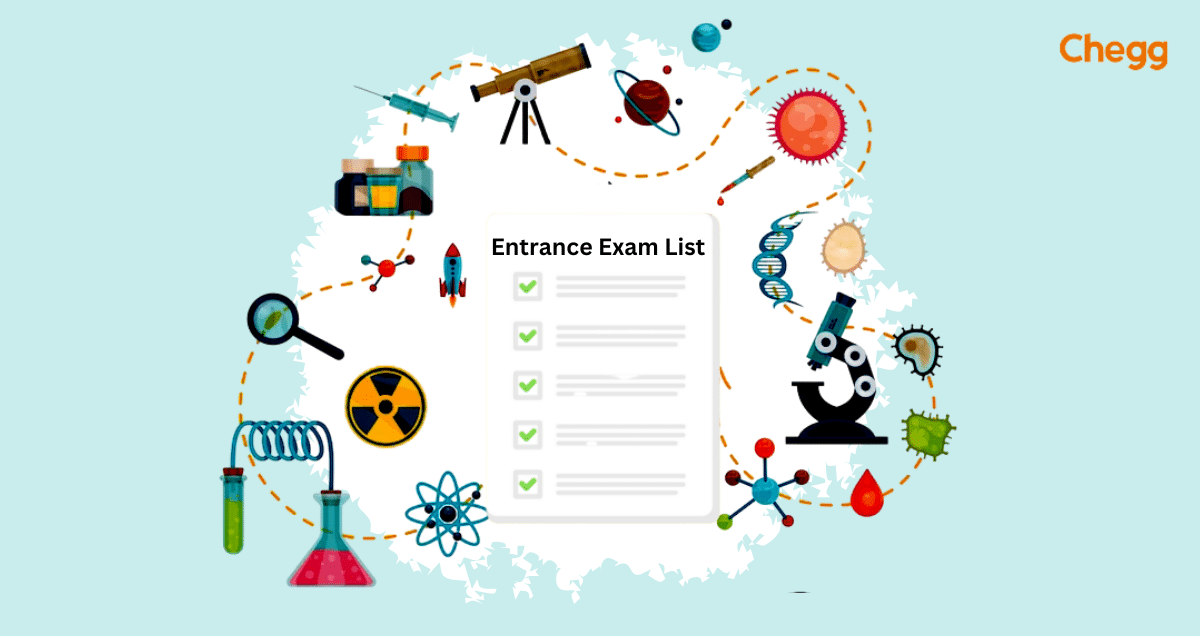Data preprocessing: Latest Guide to Success 2025
Data processing is the method by which raw data is collected, organized, and transformed into meaningful information. This systematic approach involves various stages such as data collection, cleaning, validation, sorting, and analysis to ensure the accuracy and usefulness of the final output. In today’s digital-driven world, data processing plays a crucial role in helping businesses, […] The post Data preprocessing: Latest Guide to Success 2025 appeared first on Chegg India.

Data processing is the method by which raw data is collected, organized, and transformed into meaningful information. This systematic approach involves various stages such as data collection, cleaning, validation, sorting, and analysis to ensure the accuracy and usefulness of the final output. In today’s digital-driven world, data processing plays a crucial role in helping businesses, governments, and organizations make informed decisions, optimize operations, and uncover insights that drive strategic growth.
With the explosion of big data and advancements in technology, data processing has evolved from manual methods to sophisticated automated systems. Modern tools and techniques, such as cloud computing, artificial intelligence, and machine learning, have enhanced the speed, efficiency, and scale at which data is processed. Whether it’s processing customer feedback, financial records, or sensor data from smart devices, efficient data processing ensures that valuable information is readily accessible for analysis and action.
What is Data Preprocessing?
Data preprocessing removes noise and inconsistencies, making datasets reliable and ready for training algorithms. In data mining, data preprocessing enhances pattern detection by standardizing data inputs. Machine learning relies on effective data preprocessing to ensure high-quality predictive outcomes.
Steps in Data Preprocessing
1. Data Collection
The first step in data preprocessing is data collection. This involves gathering raw data from various sources such as databases, spreadsheets, online repositories, sensors, or web scraping. The quality and relevance of collected data directly influence the effectiveness of the final analysis. At this stage, it is crucial to ensure that data is acquired ethically and complies with data privacy regulations.
2. Data Cleaning
Once the data is collected, the next step is data cleaning. Real-world data is often incomplete, inconsistent, or contains errors. This step focuses on handling missing values, correcting inaccuracies, removing duplicate records, and standardizing data formats. Data cleaning helps in eliminating noise and ensures the dataset is accurate and reliable for further analysis.
3. Data Integration
In many cases, data comes from multiple sources, and integrating these datasets into a single, unified view is essential. Data integration involves merging data files and aligning schema to ensure consistent and non-redundant information. This step also helps in resolving data conflicts that may arise due to different formats or naming conventions across sources.
4. Data Transformation
After integration, the data must be converted into a suitable format for analysis through data transformation. This process includes normalization (scaling data to a specific range), encoding categorical variables, and aggregating data. Transformation ensures that the data structure aligns with the requirements of machine learning models or analytical tools.
5. Data Reduction
Data reduction involves minimizing the volume of data while preserving its integrity. This can be achieved through dimensionality reduction techniques like Principal Component Analysis (PCA), removing irrelevant features, or binning data. This step not only speeds up processing time but also helps in improving model performance by eliminating noise.
6. Data Discretization
In some cases, continuous data needs to be transformed into categorical data—a process known as data discretization. This is especially useful for algorithms that require categorical input or for simplifying data interpretation. Discretization involves dividing data into intervals or classes based on defined thresholds.
7. Data Splitting
Finally, before feeding data into a machine learning model, it is essential to split the data into training, validation, and test sets. This helps in evaluating the model’s performance accurately and prevents overfitting. Typically, the data is divided in ratios such as 70:20:10 or 80:10:10 for training, validation, and testing, respectively.
Techniques of Data Preprocessing
1. Handling Missing Values
One of the most common issues in raw data is missing values. Techniques to handle them include removing records with missing data, replacing missing values with statistical measures (like mean, median, or mode), or using algorithms such as K-Nearest Neighbors (KNN) to estimate and fill in the gaps. Choosing the right method depends on the volume and importance of the missing data.
2. Data Normalization
Normalization is the process of scaling numerical data to a common range, typically between 0 and 1. This technique ensures that no particular feature dominates due to its scale, which is especially important for distance-based algorithms like K-Means and KNN. Common normalization methods include Min-Max Scaling and Z-Score Normalization.
3. Data Encoding
Machine learning models require numerical input, so categorical data must be transformed using encoding techniques. The most widely used methods are Label Encoding, which assigns a unique number to each category, and One-Hot Encoding, which creates binary columns for each category. Proper encoding improves model accuracy and interpretability.
4. Data Binning
Binning or discretization is the technique of converting continuous data into discrete categories or bins. This can be done using fixed-width binning, quantile binning, or clustering-based binning. Binning is useful for simplifying data, reducing noise, and preparing it for algorithms that work better with categorical data.
5. Feature Scaling
Feature scaling ensures that all features contribute equally to the analysis. Apart from normalization, another popular technique is standardization, which transforms data to have a mean of zero and a standard deviation of one. This is crucial for algorithms like logistic regression, SVM, and PCA.
6. Data Transformation
Data transformation involves applying mathematical functions such as logarithms, square roots, or exponentials to change the distribution or scale of data. This is useful for reducing skewness, handling outliers, and improving the performance of machine learning models. It also helps normalize data that doesn’t follow a normal distribution.
7. Outlier Detection and Treatment
Outliers can distort analysis and model predictions. Techniques for detecting and handling outliers include statistical methods like the Z-score or IQR (Interquartile Range), visual methods like box plots, or machine learning approaches like isolation forests. Outliers may be removed or transformed depending on their relevance.
8. Feature Selection
Feature selection is the technique of identifying and selecting the most relevant features from the dataset. Methods include filter techniques (like correlation or chi-square), wrapper methods (such as Recursive Feature Elimination), and embedded methods (like Lasso regression). This helps reduce dimensionality and improve model performance.
9. Data Aggregation
Aggregation involves summarizing data by grouping and applying operations like sum, mean, or count. This is especially useful in time-series or transactional data, where observations are combined to derive higher-level insights. Aggregation simplifies complex data and makes it more meaningful.
10. Data Sampling
When dealing with large datasets, data sampling helps in reducing the dataset size while maintaining its integrity. Techniques include random sampling, stratified sampling, and systematic sampling. Sampling improves processing speed and allows for faster experimentation with machine learning models.
Applications of Data Preprocessing
1. Data Preprocessing in Machine Learning
One of the most important applications of data preprocessing in machine learning is preparing raw data for training predictive models. Machine learning algorithms rely heavily on clean, consistent, and well-structured input. Through techniques like normalization, encoding, and feature selection, data preprocessing helps improve model accuracy and prevent issues like overfitting or bias.
2. Data Preprocessing in Data Mining
In the field of data preprocessing in data mining, preprocessing enables the discovery of meaningful patterns and relationships from large datasets. It ensures that the mined results are not distorted by inconsistencies, noise, or irrelevant information. Preprocessing steps such as data integration and data cleaning help data mining tools produce more reliable insights.
3. Enhancing Data Quality and Consistency
What is data preprocessing? At its core, it is a critical process that improves the quality and consistency of data. High-quality data is essential for making informed business decisions, accurate forecasting, and risk assessment. Preprocessing eliminates errors, fills in missing values, and aligns data formats, ensuring uniformity across the dataset.
4. Real-Time Analytics and Decision Making
Data preprocessing plays a vital role in real-time analytics, especially in sectors like finance, healthcare, and e-commerce. When real-time decisions depend on incoming data streams, preprocessing ensures the data is immediately cleaned and structured, allowing systems to react with precision and speed.
5. Natural Language Processing (NLP)
In NLP applications such as chatbots, sentiment analysis, and language translation, data preprocessing involves text cleaning, tokenization, stop-word removal, and stemming. These steps are crucial to convert unstructured textual data into a form that NLP models can understand and process effectively.
6. Image and Video Processing
Data preprocessing in machine learning is equally essential in computer vision tasks. Preprocessing techniques like image resizing, normalization, and augmentation help improve the performance of models in applications such as facial recognition, object detection, and medical imaging diagnostics.
7. Fraud Detection and Cybersecurity
In cybersecurity and fraud detection, preprocessing helps in structuring large amounts of user behavior data. Data preprocessing in data mining enables anomaly detection systems to identify suspicious patterns by reducing noise and focusing on relevant variables. This leads to faster and more accurate threat identification.
8. Business Intelligence and Reporting
Organizations use data preprocessing to feed clean and consistent data into their business intelligence tools. Whether it’s sales forecasting, customer segmentation, or performance analytics, preprocessing ensures dashboards and reports reflect accurate, actionable information.
9. Healthcare Data Management
In the healthcare sector, data preprocessing in machine learning helps in processing patient records, lab reports, and imaging data. Preprocessing supports the development of predictive models for diagnosis, treatment planning, and disease outbreak forecasting, ultimately improving patient outcomes.
10. IoT and Sensor Data Processing
With the rise of IoT devices, massive volumes of sensor data are being generated every second. Data preprocessing is used to filter, clean, and standardize this data before feeding it into analytical systems. This is vital for applications like smart homes, industrial automation, and environmental monitoring.
Tools of Data Preprocessing
1. Microsoft Excel
Excel is one of the most accessible and user-friendly tools for initial data handling. It allows users to sort, filter, remove duplicates, handle missing values, and perform basic calculations and transformations. It’s ideal for small datasets and preliminary data exploration.
2. Python (Pandas, NumPy, Scikit-learn)
Python is a popular programming language for data analysis. Libraries like Pandas and NumPy are used for data manipulation, cleaning, and formatting. Scikit-learn offers built-in methods for tasks such as scaling, encoding, and splitting data, making it highly useful for preparing data before model training.
3. R Programming
R is a statistical computing language widely used for data analysis and visualization. Packages like dplyr, tidyr, and caret provide comprehensive tools for cleaning, transforming, and preparing datasets. R is particularly favored in academic research and statistical modeling.
4. RapidMiner
RapidMiner is a no-code platform that enables users to clean, transform, and analyze data through a visual interface. It is suitable for those who prefer drag-and-drop workflows over coding, making it great for business analysts and non-programmers.
5. KNIME
KNIME is an open-source data analytics platform that supports visual workflows for data preparation and analysis. It allows users to integrate, clean, and transform data using a graphical interface, making it powerful yet accessible for users at different skill levels.
6. Weka
Weka is a lightweight software tool that provides a collection of machine learning algorithms and data preprocessing functions. It includes filtering, attribute selection, and basic data transformations. Weka is commonly used in educational settings for learning and experimentation.
7. Apache Spark
Apache Spark is designed for big data processing. It allows for fast and distributed handling of large datasets. Spark is capable of cleaning and transforming data at scale, which makes it suitable for real-time analytics and applications involving high volumes of data.
8. Tableau Prep
Tableau Prep is a visual data preparation tool that helps users clean and reshape data before analysis. With a simple drag-and-drop interface, it allows for merging, filtering, and transforming data, and is often used alongside Tableau’s visualization features.
9. SAS Data Preparation
SAS offers advanced data preparation solutions suitable for enterprise-level analytics. It supports profiling, cleansing, and transforming data with a strong focus on accuracy and compliance. It’s commonly used in industries like finance, healthcare, and government.
10. Alteryx
Alteryx provides a visual workflow platform for advanced data preparation and analytics. It supports blending data from multiple sources, cleaning, transformation, and even integrating machine learning, all without requiring deep programming knowledge.
Uses of Data Preprocessing
- Improves Data Quality – Cleans and corrects raw data by removing errors, duplicates, and inconsistencies.
- Handles Missing Values – Fills in or removes incomplete data to maintain dataset accuracy.
- Prepares Data for Analysis – Converts raw data into a structured format suitable for modeling and analysis.
- Enhances Model Accuracy – Standardizes and scales data, leading to better machine learning performance.
- Reduces Complexity – Simplifies large datasets through feature selection and dimensionality reduction.

Advantages and Disadvantages of Data Preprocessing
Advantages
-
Improves Data Quality
It removes noise, duplicates, and inconsistencies, resulting in cleaner and more accurate datasets. -
Enhances Model Performance
Well-preprocessed data leads to better predictions and efficiency in machine learning models. -
Handles Missing or Incomplete Data
It provides strategies to fill or remove missing values, making the data usable. -
Reduces Dimensionality
Through techniques like feature selection, it simplifies datasets and improves processing speed. -
Ensures Data Consistency
Converts data into standardized formats, making it easier to analyze and integrate across systems.
Disadvantages
-
Time-Consuming Process
Cleaning and transforming data can be lengthy, especially with large or messy datasets. -
Requires Domain Knowledge
Making the right decisions during preprocessing often needs an understanding of the data context. -
Risk of Data Loss
Over-cleaning or incorrect handling may lead to the loss of valuable information. -
Complex for Beginners
Involves technical steps like normalization, encoding, and transformation, which can be overwhelming for newcomers. -
Not Always Fully Automated
Despite available tools, some steps may still require manual intervention and judgment.
Conclusion
Data preprocessing is a crucial first step in any data analysis or machine learning project. It transforms raw, unstructured, and often messy data into a clean, organized, and reliable format. By handling missing values, removing noise, normalizing features, and encoding categorical variables, data preprocessing ensures that the dataset is suitable for further analysis and model building. This process not only improves the accuracy and efficiency of algorithms but also helps uncover meaningful insights that would otherwise be obscured by data irregularities.
In today’s data-driven world, the importance of data preprocessing cannot be overstated. Whether used in business intelligence, healthcare, finance, or scientific research, well-prepared data is the foundation of informed decision-making and predictive modeling. Although it can be time-consuming and requires attention to detail, the benefits—such as enhanced model performance, reduced complexity, and greater data integrity—make it an essential practice in the data science workflow.
Frequently Asked Questions (FAQ’s)
What is data preprocessing?
Data preprocessing refers to the process of cleaning, transforming, and organising raw data into a suitable format for analysis or machine learning. This typically involves steps such as handling missing values, normalising data, encoding categorical variables, and removing duplicates.
What are the 5 major steps of data preprocessing?
Data Cleaning
Data Integration
Data Transformation
Data Reduction
Data Discretisation
What is data preprocessing in data mining and why is it important?
Data preprocessing in data mining refers to the preparation and transformation of raw data into a clean and structured format suitable for analysis. This step is essential because raw data often contains noise, missing values, or inconsistencies that can negatively impact the accuracy and efficiency of data mining algorithms.
How does data preprocessing in machine learning improve model performance?
Data preprocessing in machine learning involves techniques like normalization, encoding categorical variables, handling missing data, and feature selection. These steps are critical for improving the performance of machine learning models by ensuring that the input data is clean, consistent, and appropriately formatted.
What are the common steps involved in data preprocessing for data mining and machine learning?
Common steps in data preprocessing for both data mining and machine learning include data cleaning (removing or correcting erroneous data), data integration (combining data from multiple sources), data transformation (normalizing or scaling values), and data reduction (selecting relevant features or records).
The post Data preprocessing: Latest Guide to Success 2025 appeared first on Chegg India.





















/cdn.vox-cdn.com/uploads/chorus_asset/file/25137937/236942_Nic_Cage_Interview2_CVirginia.jpg)





